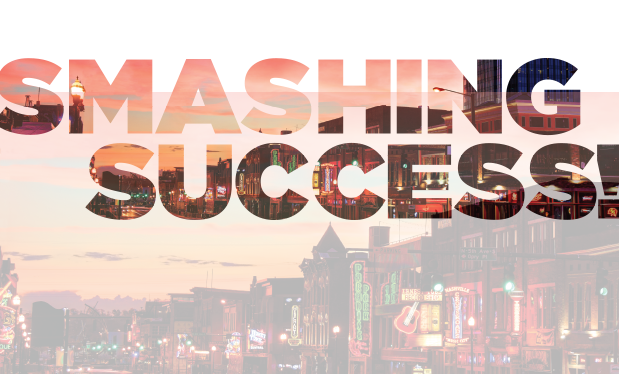The most successful organizations excel because they follow a system. In football, Nick Saban's Crimson Tide perform year after year because of the system the team follows. In the military, the U.S. Marines turn over 80 percent of the entire organization every five years, yet it remains the most effective fighting force on the planet because of the system it follows. In the roofing industry, your company also could operate just as successfully by implementing a strict operating system. Mine did.
One such system is a hot trend in business: the Entrepreneurial Operating System™ (often called EOS). After decades of business consulting success, Gino Wickman documented this program in his book, Traction. The simple system enables business owners and managers to elevate priority issues, allowing an entire organization to focus on the highest priority issues or opportunities. Following is an overview of the system, the steps you can take to implement it in your organization and resources that will expand on the ideas represented here.
Foundational tools
At first, I was reluctant to buy into the touchy-feely movement of implementing core company values and the importance of business plans. It wasn't until our company employed more than 10 people that I realized how critical it is to make all business decisions based on a set of higher standards and goals. The Entrepreneurial Operating System can help you do that and is based on the following foundational tools, with the most important being the Vision Traction Organizer. When embarking on your Entrepreneurial Operating System journey, you should:

- List three to seven core values that scream who you are. Who you hire, who you fire and what decisions you make all should be guided by your organization's core values. I suggest you gather your executive leadership team and jot down past experiences that define your organization. There should be a historical story that describes using each core value so it's easy to explain as new people join.
- Identify your core focus. Your company should focus to be the best. Jim Collins, in his book Good to Great, called this the hedgehog concept. It's what you can be the best at, what you are deeply passionate about and what drives your economic engine. Some roofing examples are focusing only on new construction, reroofing, service, commercial roof systems or residential roof systems. You need to define your core focus and stick to it.
- Set a core target. Collins called this a BHAG—Big Hairy Audacious Goal. This should be your 10-year target. Shoot for the moon to hit the moon. A BHAG becomes attainable with an effective marketing strategy. Many roofing contractors take a shotgun approach to marketing and advertising, which wastes money and resources on leads and projects that are simply not profitable. But by properly identifying your customers' demographic, geographic and psychographic persona as well as the three unique things your company does well, you could achieve greater success. When I completed this step and looked at my marketing efforts, I realized I was trying to be the best provider to everyone. But now our marketing and advertising budget is less than 1 percent of our revenue, down from almost 10 percent.
- Thinking about your core target, determine tasks for the next three years and then what needs to be done within the first year. What must your company accomplish during the next three years to meet your core target goal? This usually includes a list of assets to acquire, personnel to hire and train, revenue and profit goals, and leadership accomplishments. The list should be short and simple. Then, list what must be accomplished this year to meet the three-year goals. It may help to divide the year into quarterly goals and three to seven things that must be accomplished during a given quarter to keep the company on track to meet its yearly plan.
- Set a company scorecard. I suggest a 12-week rolling scorecard of the eight to 12 most important metrics you need to know to ensure your company is running well. Each metric has a goal target and should be highlighted in green if on plan and red if off plan. This is an easy, graphical way to visualize trends and know what area of your company needs attention. This can be reviewed every week at what Wickman calls L-10, or level 10, meetings.
- Hold L-10 meetings. Meetings are typically dreaded. There usually is a ton of discussion and little actually accomplished. L-10 meetings seek to change that by providing a productive format to follow and allowing those in attendance to rate the meeting. If someone scores the meeting less than an eight out of 10, he or she gets to safely state what could have been done to improve the productivity of the meeting. When an L-10 structure is followed, meetings are productive and engage all those who attend. To read more about L-10 meetings, see below.
- Create an accountability chart. Like everything else in the Entrepreneurial Operating System process, an accountability chart is designed to simplify processes with clear, concise lines of responsibility. Each placement on the chart is defined by a business function, who is ultimately responsible for it and the duties required by that function.
How to get started
To help you begin to implement the Entrepreneurial Operating System process, I suggest reading Get A Grip by Gino Wickman and Mike Paton first. This is a story about an actual company's transformation using the Entrepreneurial Operating System, which provides examples of personalities and obstacles. Then, read Traction, which is more of a how-to manual of sorts. There also are free tools available on www.EOSWorldwide.com.
My company began implementing this system in February 2015. Admittedly, our first time around with the Entrepreneurial Operating System method didn't give us the full results we expected because we took too many shortcuts. After two years, we hired an implementer, and it was well worth the money. I suggest you gain a basic knowledge of the system by first reading the two books before hiring an implementer, but there's no question having an outside person holding your team accountable is a smart investment.
In addition, it's vital this system has complete buy-in from leadership. Otherwise, it will not work. Being comfortable with opening up the books is critical. It took me three years to get comfortable with being financially candid, but doing so has paid huge dividends. Our company grew from $18 million in sales to $48 million in sales thanks to this system. I encourage all roofing contractors to research the system and explore how it can help them achieve their goals.
Ken Kelly is president of Kelly Roofing, Naples, Fla.
How to run an L-10 meeting

A typical L-10 meeting starts with a five-minute "segue" during which each person shares a personal and/or professional accomplishment that took place since the most recent meeting. The segue is designed to break from the grind and remind attendees what progress looks like.
Next, a five-minute scorecard section takes place during which attendees report the three to seven most important numbers to show how the company is performing. The scorecard should be updated and reviewed weekly, and only the person accountable for the numbers reports them. This ensures personal responsibility and accountability. A sample scorecard for sales and marketing would sound similar to this: "Our goal is 60 estimates per week. We only completed 48. Please note this as an issue."
Next, for five minutes, attendees will report whether their quarterly goals are on or off track. Each quarter, there should be timelines of small milestones of events with dates, usually one to two weeks. The likely outcome is the team will note that being off-track is an issue and recommend ways to get back on track. This discussion can be the most powerful tool in the Entrepreneurial Operating System arsenal. When the right goals are chosen and the plan is followed correctly, the company functions more smoothly.
This is followed by a five-minute to-do list discussion, which includes items that typically are one- to two-week tasks that are assigned to a single individual. Items not completed would be dropped to the issue/opportunity list and discussed later.
The next five minutes should be spent discussing big events, possible issues or pride. This is not the time to go into details; rather, attendees should simply call out a customer's name or employee's name along with a single sentence. An example would be: "Alice is doing awesome in her new role." Or: "The land development project is off schedule because of the delivery issues our supplier is causing."
The next 40 minutes of the meeting should be spent addressing issues and opportunities. Each person attending the meeting should vote for the most important item to discuss. The meeting may end up being completely devoted to solving one problem. However, the problem will be solved, and it won't be an issue again. Once the first issue is solved, the team votes on the next highest priority issue to solve and so on. More direction about how to run this part of the L-10 meeting can be found in Traction.
The final five minutes of the meeting should be spent reviewing what was resolved and upcoming to-do lists and assignments. Any upcoming meetings or important events also are mentioned. Everyone then rates the meeting with a ranking between one and 10, 10 being the best. The question usually asked is: "Did we accomplish something today?" If a vote of eight or less is given by anyone, it is acceptable for the meeting leader to ask what could have been done differently to achieve a 10. The person giving the score is required to answer.
I suggest implementing the L-10 meeting agenda with your executive leadership team first. Save deploying the meeting agenda to all departments until you have a good grasp on the fundamentals. Our organization was forced to do a second launch because we did not have the comfort needed to get the most out of our L-10 meetings.



